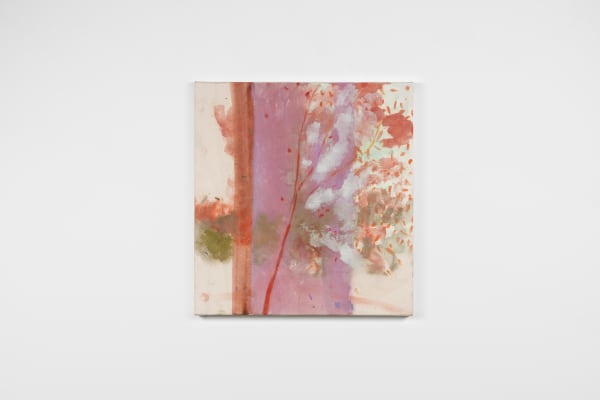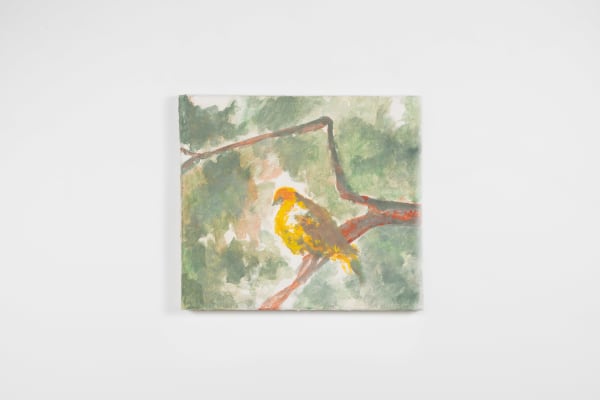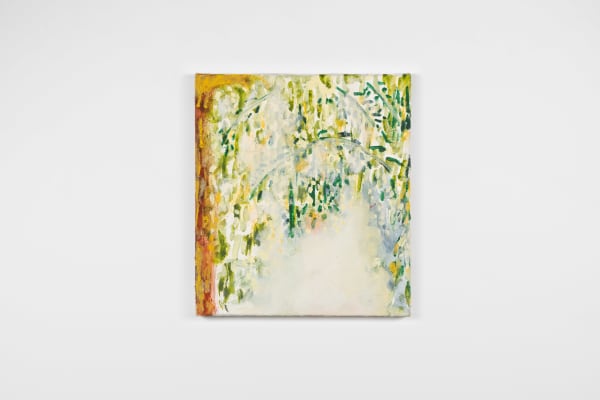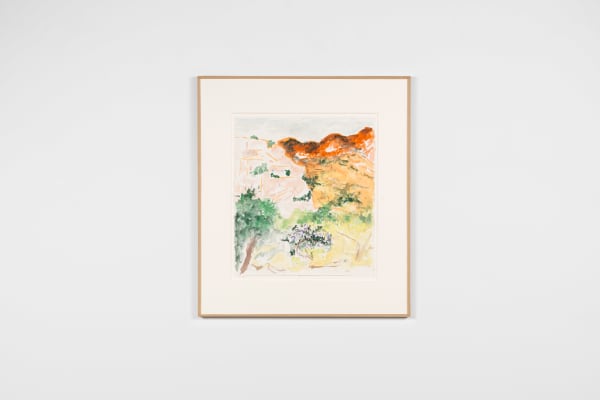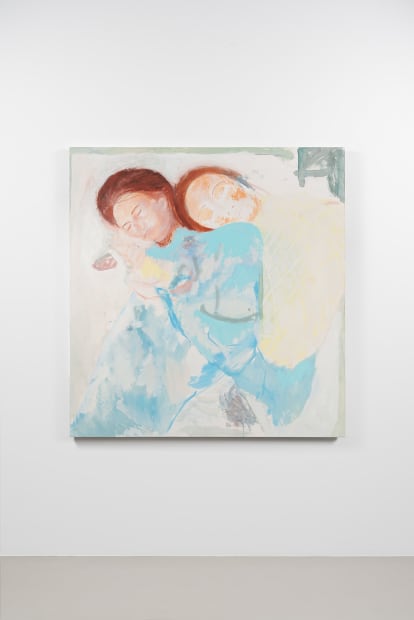-
-
LUCAS TALBOTIER
Auprès de toiEXHIBITION FROM NOVEMBER 14 TO DECEMBER 14, 2024
DUTKO / Ile Saint-Louis
4 rue de Bretonvilliers - Paris 4e
Thursday to Saturday, 2:30 PM - 7:00 PMGalerie Dutko is pleased to present a new exhibition by French artist Lucas Talbotier (b. 1994) from November 14 to December 14, 2024. A selection of large, medium, and small-format paintings, as well as works on paper, will be showcased on this occasion. Titled *Auprès de toi* ("By Your Side"), this second exhibition with the gallery highlights the recent evolution of the artist’s work, enriched by new explorations in portraiture, landscapes, and the pictorial translation of emotions related to sensitivity and grace.
The exhibition catalog will feature a foreword by art critic Grégoire Lubineau and an exclusive interview between Lucas Talbotier and painter Nathan Bertet (b. 1997, who will soon exhibit at Galerie Jousse Entreprise in Paris).
-

-
Lucas Talbotier's recent paintings are easier to describe than those he produced just two years ago. His landscapes, in fact, now present themselves more openly as such, and one feels almost no need for metaphor, analogy, or any figurative language to describe them. One could easily do what he himself has done: simply depict the form and colors of a tree, a path in the forest, or—in scenes that transcend pure landscape—two women asleep, nestled together, or a couple sitting in an embrace. Yet, after all, perhaps these words are enough to convey the harmony of the motifs they represent.
It remains to understand the underlying factors behind this recent evolution in his work, which for a long time employed forms less willing to be fully recognizable. One might first think this shift partly involves painting “more.” Indeed, trees, with their branches brimming with clusters of small leaves, and all the other elements that now accompany them—like a wall, a fence, a window, a curtain—contribute to the resolutely figurative character of the paintings. They display a more generous pictorial style: everywhere, the material appears richer, and the colors are more pronounced than the delicate shading in his earlier compositions.
-

-

-
In his painting classes, Lucas Talbotier humorously refers to the so-called "fear of the blank page" (or blank canvas) but explains that, rather than a fear of emptiness, it is an overwhelming "fullness" that can hinder an artist from beginning a work. This fullness, he calls "cliché": the multitude of ready-made images and visual clichés that crowd the canvas before the painter has even picked up a brush—images already existing in the artist’s mind and all around him, like ghosts that must be exorcised once and for all to truly create.
For an artist like Lucas, who engages with the motif of landscape, this exorcism is especially challenging. He contends with the lingering presence of countless magnificent landscapes painted since the 17th century—from Carracci to Per Kirkeby, including Courbet, the Impressionists, Post-Impressionists, Fauves, and many others. How can one dispel the shadows of these masterpieces, which have become almost stereotypical images, casting themselves on our minds even today?
-

-
Deleuze teaches us that one must undergo what he describes as a “catastrophe,” a way of annihilating forms into an aesthetic chaos. It seems Lucas has chosen to embrace this, risking the balance of the more diffuse and almost meticulous style he had previously favored. Much like Guston embraced a form of catastrophe by returning to figuration in the late 1960s, Lucas, too, has welcomed a form of rupture in his recent paintings in order to create images that are truly his own. So that, finally, to echo Cézanne’s words (which Deleuze references throughout his lectures), “the color rises.”
-
This explains the sometimes abrupt effect of these paintings, whose motifs have a more striking, less gentle quality than before—like the aforementioned wall or curtain, so present and so rough (“unrefined,” as the dictionary would say) to the eye that sees them obstructing the landscape, which is less untroubled than expected. They disrupt the cliché of the landscape the viewer unconsciously hoped to encounter but which, unlike what he now finds, already existed in his mind.
-

-
Paradoxically, to achieve this, the artist needed the very masters whose works he was trying to forget, because undertaking the difficult task of forgetting something requires first making sure it is firmly held in mind, fully understood and internalized. Thus, he returned to his personal pantheon of illustrious ghosts—the painters he most admired. Guston, of course, but also Cézanne (always him—how can one not sense the aura of the Provençal painter’s watercolors in that small work, all in blues and greens, where the empty spaces let the composition breathe so beautifully?), Matisse (especially his early landscapes, before 1905), Mary Potter (notably her luminous 1960s watercolors, including a small composition called *Grey Window Toppesfield*, featuring a large window topped with a curtain), and, especially, a figure closer to our own time, though also no longer with us: Ilse d’Hollander.
-
The Belgian painter Ilse d'Hollander, who died in 1998 at the age of 29—the same age Lucas was when he began the series of paintings in this exhibition—dedicated a significant part of her work to landscapes, like him. She rejected, as John Yau writes, “the opposition that made abstraction and figuration two mutually exclusive premises, choosing instead a path that embraced both at once.” Two small paintings from 1996, which Lucas discovered on the website of the Victoria Miro gallery following an exhibition in late 2018, particularly caught his attention. He even reproduced their exact compositions in small oil studies—one characterized by a delicate, arched black curve stretching toward a blue-gray horizon, the other by the verticality of what seems to be a tree trunk flanked by ghostly branches. He recreated these works not merely to capture their appearance but to better understand their structure and how d'Hollander had interacted with the canvas.
His aim was not so much to absorb the “outer” look of his masters’ works, but rather to grasp their internal logic—the process from which they arose. In this regard, Ilse’s own words about her painting are enlightening:
“My being is present in each of my actions on the canvas. (...) After several successive coverings of this surface, it sometimes suggests a silhouette or a figure, sometimes made more explicit by a contour line. The suggestiveness induces a slippage between the line and the surface layers. And the play of surface layers and lines can render a figure readable. I like to call this figure a character. A character that is like the portrait of its own reason for being in painting.”
-

-

-
In a way, then, much like Ilse d'Hollander before him, Lucas has recently been striving to bring his own “characters” to life—whether they are trees or beings of flesh and blood. In doing so, he has transformed his approach to creating paintings. Having previously worked only alone, within the enclosed walls of his studio and under artificial light, he has now embraced plein-air painting, at times even with the company of another person. During travels and walks, he began by making small watercolors and taking spontaneous photos with his phone, capturing fleeting visions and, more importantly, joyful moments he wished to remember.
It is delightful to see, on these small pieces of paper washed with gentle colors, the drafts of the larger landscapes he would later paint in oil on canvas, attempting to render them even more primitively than in the initial sketches captured on paper. Sometimes many months passed between those first studies (if one can even call them that) and the larger paintings, allowing the atmosphere of the memories they captured to grow clearer, more precious, and more luminous.
-

-
And what memories these recent months have held for him. At the end of 2022, Lucas met Diane. A month later, she fell ill, and it was in a hospital room—where he visited her nearly every day over the following months—that he continued to get to know her. He felt a deep urge to reassure and protect her, even as he found in her a comfort and tenderness he had never known before. They fell in love, and their love unfolded along the winding path of Diane’s recovery. As soon as she was able to leave the hospital, Lucas took her on a trip to Corsica, and it was those landscapes admired in the maquis there that he first began to capture—first in watercolors, then on larger canvases (*Corsican Landscapes*).
Later, recalling the hospital room where he’d visited her at Sainte-Marie, he painted a large composition filled with tenderness (*View from Sainte-Marie*)—as if capturing an unexpected moment of peace, or a silent prayer offered to the trees, so strong, tranquil, and beautiful, when the future was uncertain. Later still, once they had moved in together, he took up the habit of weekend excursions with her—long walks in the forest or at Saint-Pair-sur-Mer, not far from Mont Saint-Michel, near her parents’ home. The various landscapes we see are those they discovered together.
-

-

-
Thus, the title of the exhibition for this work, *"By Your Side,"* can be understood in three distinct and complementary ways. The "you" being addressed is, first and foremost, Diane, beside whom the artworks were literally conceived and created—the intimate address of a lover to the beloved. Next, it refers to other painters he recalled and then tried to forget, to process once and for all by paying them homage, beginning with Ilse d’Hollander. Finally, it includes each of the subjects Lucas has delicately attempted to render as they appeared to him: a grove of birch trees springing up around a bend in the path (*Les bouleaux*), a wall of old bricks in the garden of the house in Saint-Pair (*Le mur de Saint-Pair-sur-Mer*), a bird singing on its branch (*L'Oiseau Mauricien*). Diane asleep in her older sister’s arms, wrapped in her hospital gown (*Le câlin*). And then Diane again, whom he embraces, a solitary and fragile tulip quietly standing in a vase before them (*Diane, la tulipe et moi*).
-

-
TEXTE BY GRÉGOIRE LUBINEAU
Published in the exhibition catalogNovember 2024ALL CREDITS © AGENCE PHAR & ELSA MO, 2023-2024
-

-

-









